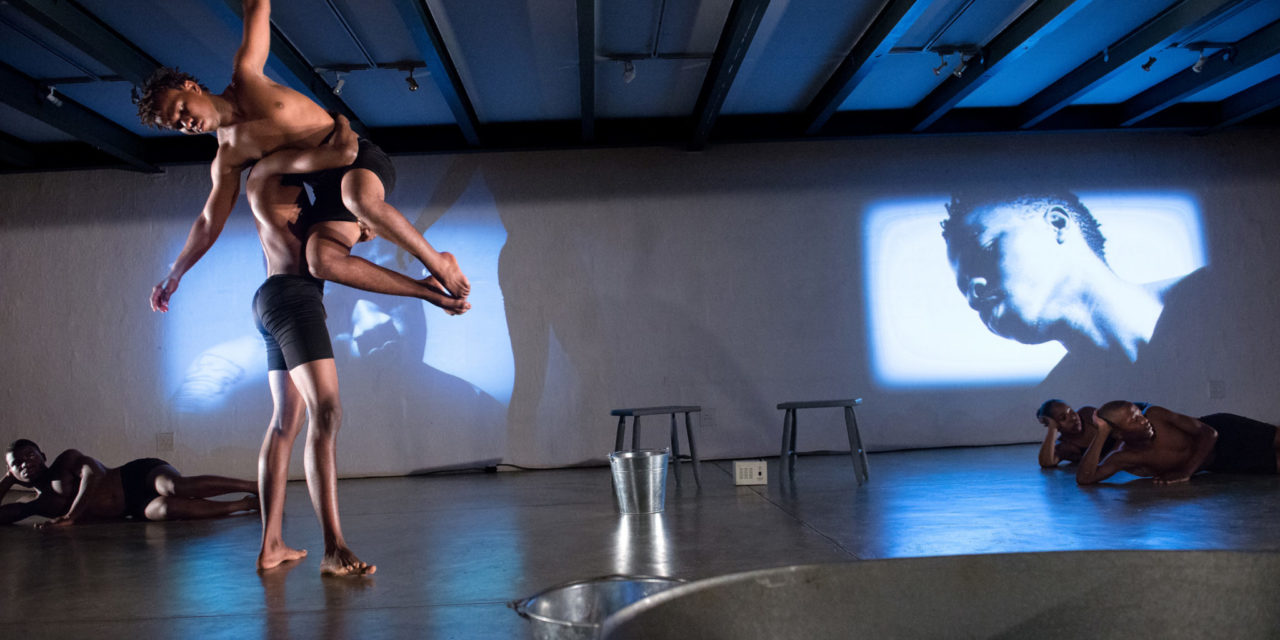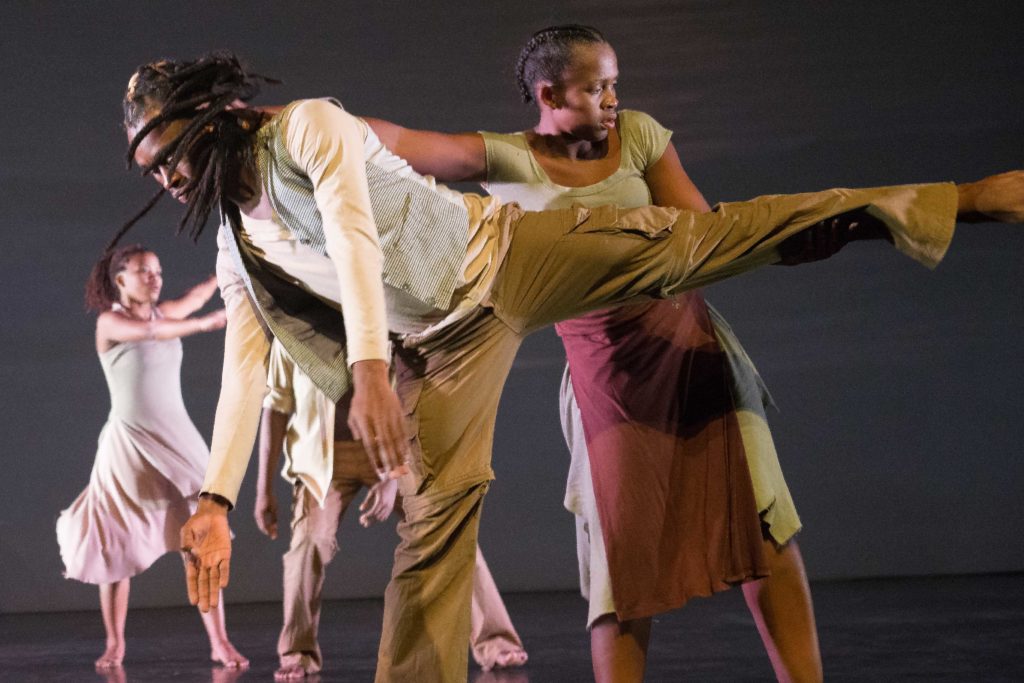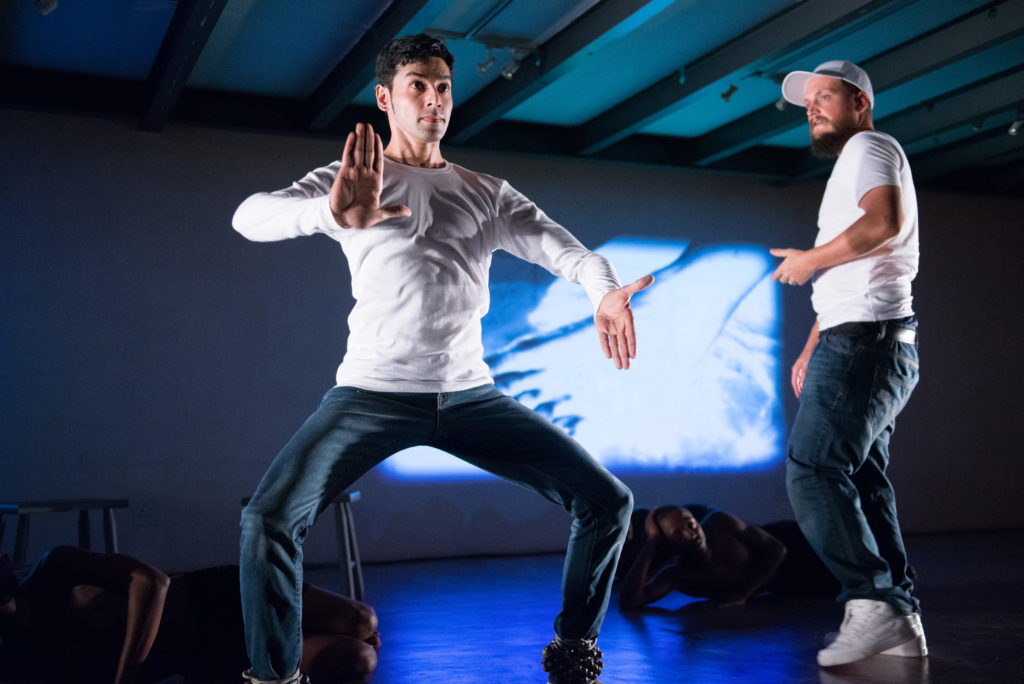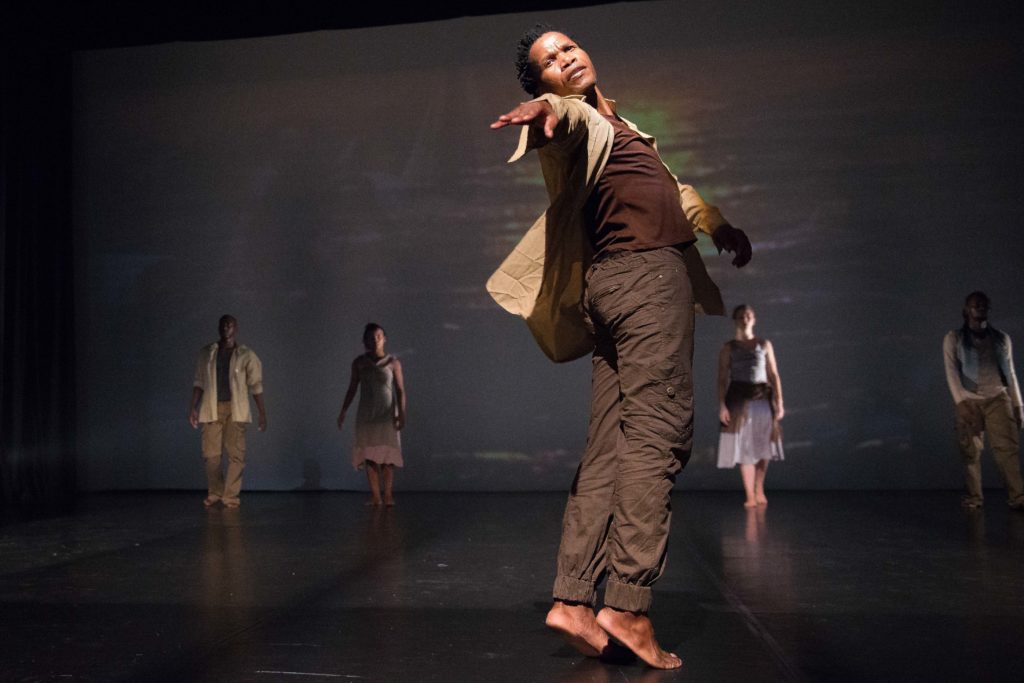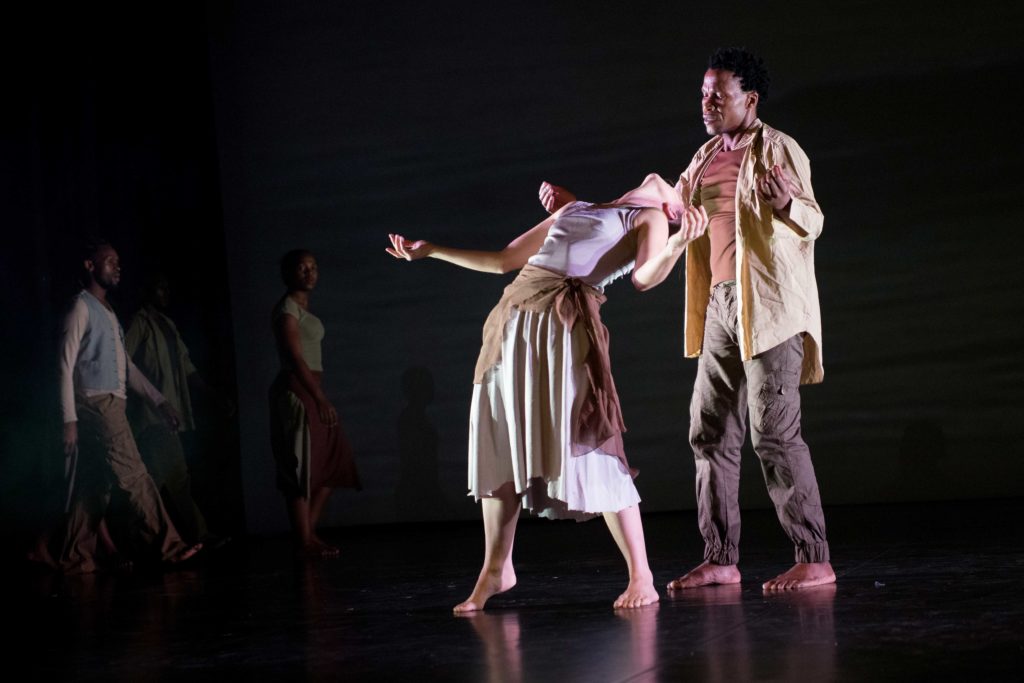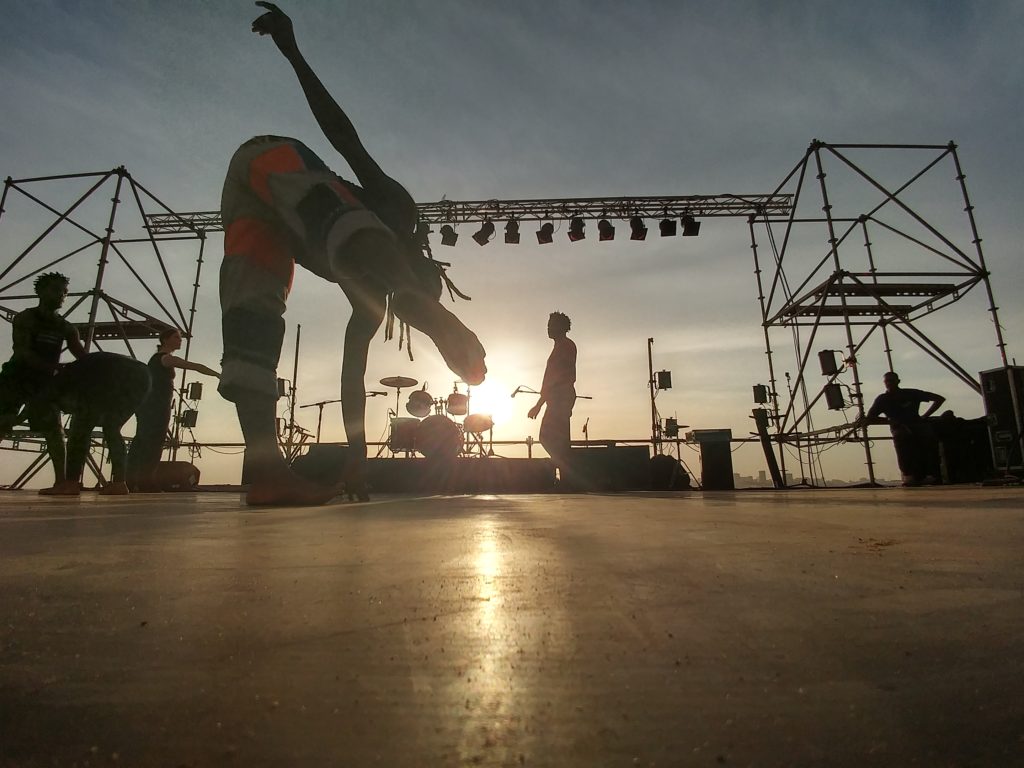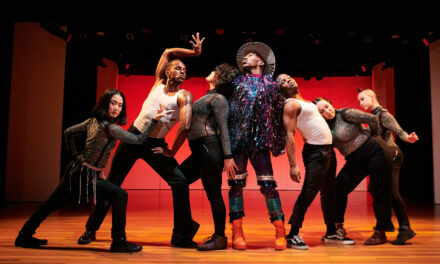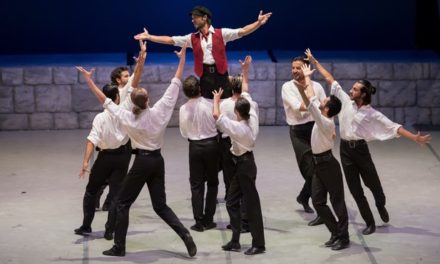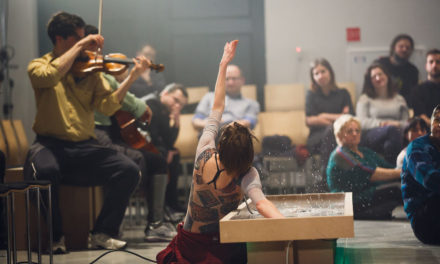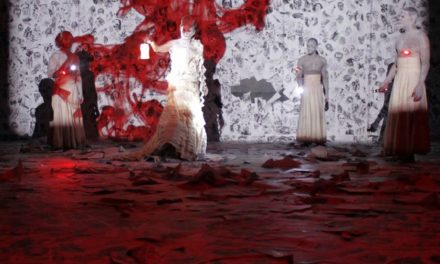Durban, South Africa. Flatfoot Dance Company’s Home trilogy created and presented at different sites over 2016, consisted of three collaborative works conceived and facilitated by Artistic Director Lliane Loots. Loots is no stranger to collaborations, and her Home trilogy continues this tradition of drawing together some of Durban’s finest, to create and perform together. Homeland (security), the first installation in the trilogy, was included in Flatfoot’s collaborative season Homeland, which saw Loots team up with sister choreographer Sbonakaliso Ndaba, at Durban’s Elizabeth Sneddon Theatre, in delivering a season of powerful and dangerous contemporary dance performed by the six resident Flatfoot Dancers. Migrations (at the feet of Kali), the second installation in the trilogy, was performed at the KZNSA Gallery in Durban as part of the Jomba! Contemporary Dance Experience. It was created with Flatfoot’s Advanced Dance Development Programme, spoken-word extraordinaire Iain ewok Robinson and Kathak master Manesh Maharaj. Southern Exposure, Loots’s final installation in her Home trilogy, performed as part of the Goree Island Diaspora Festival in Dakar, Senegal the six resident Flatfoot Dancers and guests Robinson and Maharaj.
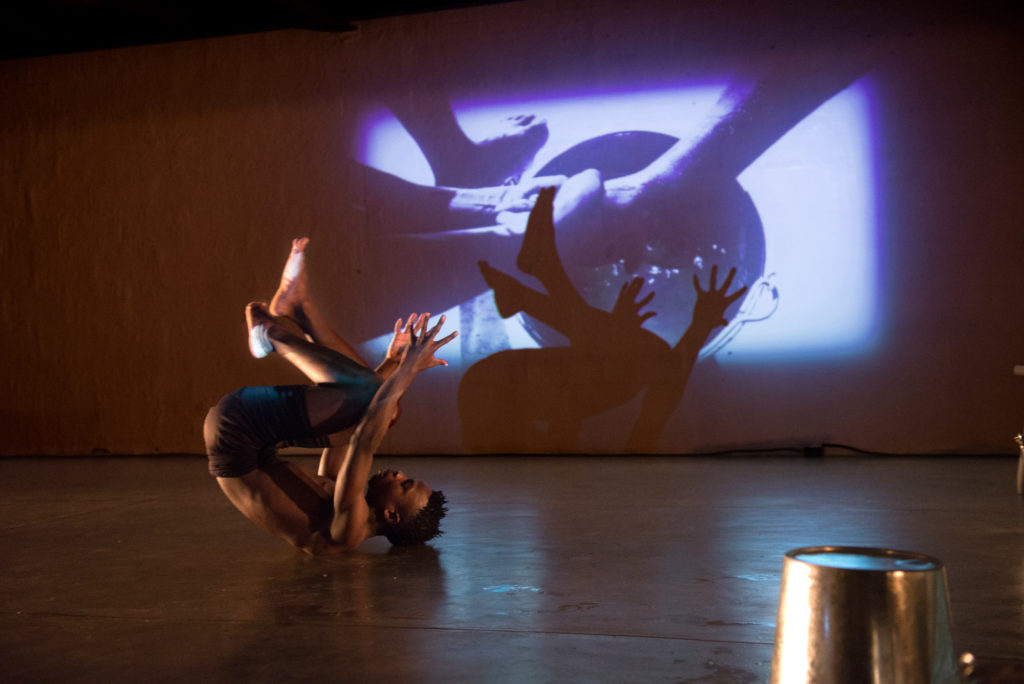
Sihle Mpanza from Flatfoot’s Advanced Dance Development Programme (ADD) in Migrations (at the feet of Kali). Photo credit Val Adamson
Homeland (security) offers a visceral and visual engagement with Guillermo Gomez-Pena’s A Declaration of Poetic Disobedience from the New Border, which is used in the work. Inspired by Loots’s own interrogations into the meaning of home as a private space, as public and political spaces and as embodied, Homeland(security) is a response to the symbiotic notions of home(land), security and displacement in the wake of the violent and very painful aftermath of xenophobic and racist attacks within South African borders. In working to navigate the fragile space between the proverbial them and us, Loots evokes a sense of speaking truth to power where bodies speak much more eloquently than words.
The second installation in the trilogy, Migrations (at the feet of Kali), created specifically for the KZNSA Gallery, explores intersecting histories of Indian indentured labourers, Black migrant workers and White priviledge. Video installations created for the work, by local Durban film-maker Karen Logan offer a backdrop for the work, while simultaneously layering the complex and non-linear narrative that is fearlessly political. Combining visual installation, spoken word, Kathak and contemporary dance, Loots’s choreography demands more than to be looked at, rather it forces one to feel. Maharaj’s invocation of Kali is much more than a sight to behold, it is an energy altering force to be felt. The 9 Advanced Dance Development dancers perform with power, but are fragile as they embody the trauma of centuries of oppression of people of colour. Their young black bodies holding, firmly, the memory of their ancestors and the promise to never forget, as spoken word artist Iain (ewok) Robinson proclaims in the production: “I’m. Not. Proud. How can I be? History, not heritage, describes my ancestry. No pride in me. Not proud. How could I be when I’m having to hunt my ancestry?”
Loots’s choreographic language, with strong roots in release technique provide a wonderful counterpoint for Maharaj’s precise (and quite bound) Kathak technique. The intimacy of the gallery space, which situates the audience in close proximity to the performers is well suited to Loots’s choreographic style with its intricate gestures and deliberate subtleties. Much like the first installation in her Home trilogy – Homeland (security); Migrations (at the feet of Kali) offers bodies that speak, unashamedly and unapologetically. Ultimately the work invokes bell hooks’s sentiment – drawn from the South African Freedom Charter that “our struggle is also a struggle of memory against forgetting.” Furthermore, it advocates for “a politicization of memory that distinguishes nostalgia, that longing for something to be as once it was, a kind of useless act, from that remembering that serves to illuminate and transform the present” (1990: 147).
Fusing several performance elements and references from the first two installations in her Home trilogy, Loots’s third installation – Southern Exposure, performed on an open air built up stage, with the Atlantic Ocean as its backdrop, offered a seamless dreamscape that, while critical in its engagements also found celebration and hope in its narrative. In exploring history, memory, belonging and dislocation – the work seemed to echo the spirit of Goree Island, itself steeped in history and memory, and violent dislocation; most notably in relation to the Maison des esclaves (House of Slaves) and the door of no return.
Once again returning to Guillermo Gomez-Pena’s A Declaration of Poetic Disobedience from the New Border, combined with original poetry written and performed by Iain (ewok) Robinson, the work offerd part spoken word soundtrack, and part recorded – layering Loots’s exploration of bodies that speak truth to power even further. The complexity of the narrative can be related to what South African choreographer Jay Pather refers to as a “colonial hangover that we have not shaken off”; and the need to explore this, particularly in light of contemporary calls and movements towards de-colonisation in our own context as South Africans. In form and delivery, SOUTHERN EXPOSURE found a delicate balance between aesthetic activism and the sheer beauty of the moving body. In tackling themes political in nature, Loots and her collaborators managed still, to retain a commitment to beauty that Flatfoot Dance Company has come to be known for.
Evident in all three works is Loots’s signature style choreography which offers a non-linear and layered narrative that is both beautiful to watch and disturbing in its considerations. Simultaneously the works are a kind of love-song to civil and artistic disobedience and Loots’s desire to speak truth to power. Thematically, the HOME trilogy offers work rich in contestations and dichotomies of belonging and not-belonging, of being violently policed and often too, violently displaced. Through exploring history and memory, Loots’s desire to “speak truth to power” is most evident in her engagements with the body as a site of struggle. In her work, the body is both subject and object – discourse and physical fact. She creates choreographic tapestries that are at once intimately personal and intricately critical and provocative.
Ultimately Loots’s HOME trilogy provided audiences with some of the finest performance talent in our country, as rich in technique as in provocation and the yearning for a wider community, somewhere between ‘them’ and ‘us.’
References:
Hooks, b. (1990). Yearning: Race, Gender and Cultural politics. Boston: South End Press.
Pather, J. (2004). Keynote Address. in African Contemporary Dance? Questioning Issues of a Performance Aesthetic for a Developing and independent Continent. A published preceedings of the 7th Jomba! Contemporary Dance Conference, held at the University of KwaZulu-Natal. 22-24 August, 2004. Co-ordinated by the Centre for Creative Arts: © University of KwaZulu-Natal.
Programme Notes: HOMELAND. Performed by Flatfoot Dance Company, April 2016.
Robinson, I. 2016. Hunting My Ancestry, in Jomba! Khuluma Digital #1, issue 10, pp 11-12. © Iain ewok Robinson.
Guillermo Gomez-Pena. A Declaration of Poetic Disobedience from the New Border. https://youtu.be/yrmAd6rIdqk (Accessed 23 January 2017; 22:41).
This post was written by the author in their personal capacity.The opinions expressed in this article are the author’s own and do not reflect the view of The Theatre Times, their staff or collaborators.
This post was written by Clare Craighead.
The views expressed here belong to the author and do not necessarily reflect our views and opinions.

